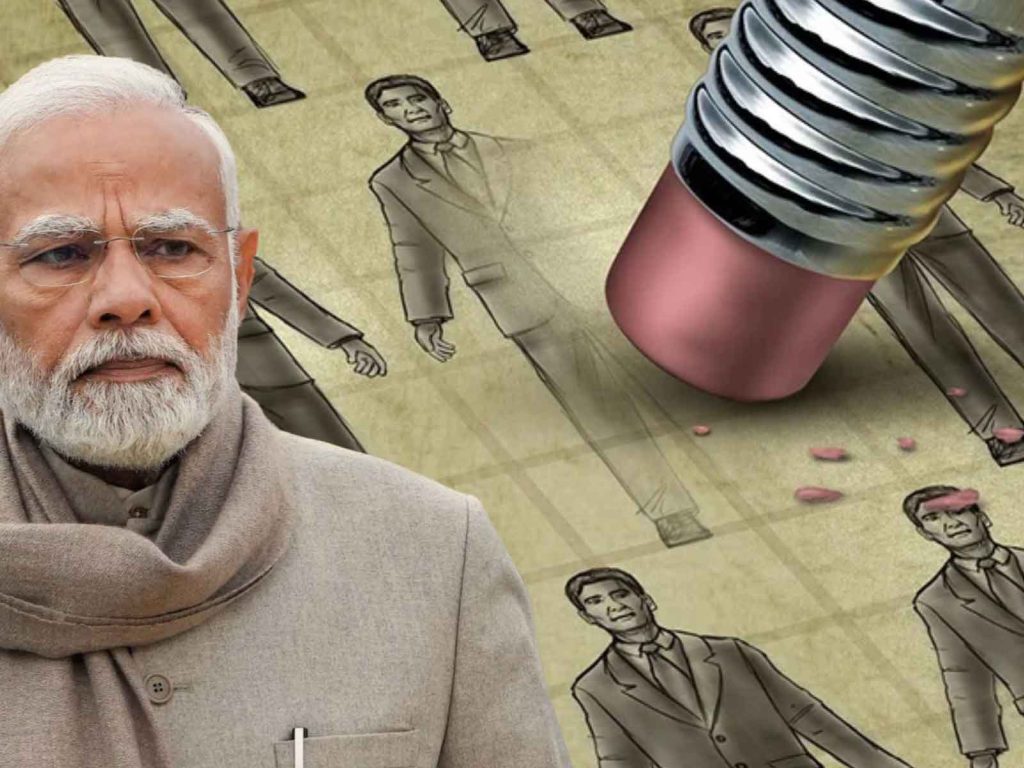
On Tuesday, Prime Minister Narendra Modi’s coalition government will unveil its first federal budget following a narrow electoral victory. With Modi now reliant on coalition partners for the first time, this budget is expected to signal a shift in spending policies while maintaining a commitment to fiscal prudence. The challenge will be to address the growing disparities between India’s booming GDP and the persistent economic distress in rural areas.
Modi, in his third term, is under pressure to leave a lasting legacy. Rathin Roy, a former member of Modi’s Economic Advisory Council, suggests that Modi might be tempted to focus on economic reforms that benefit the masses. This is seen as an area where his administration has struggled historically, despite significant investments in infrastructure, tax cuts for corporations, and export incentives.
In the past decade, Modi’s government has invested billions in building infrastructure such as sea bridges and expressways, implemented tax cuts for large corporations, and launched subsidy schemes to boost export-oriented manufacturing. These measures have contributed to a stabilizing macro economy and rising stock markets. However, they have also been accompanied by increasing inequality and rural distress.
Economic Disparities
India’s economic growth has not been evenly distributed. BMW reported its highest sales ever in the first half of the year, but overall consumption growth remains at its lowest in two decades. Wages have stagnated, household savings have declined, and job opportunities, particularly well-paying ones, are scarce. Rural areas, especially in northern and eastern India, lag significantly behind urban centers in terms of income, health, and living standards.
For example, in Muzaffarnagar, Uttar Pradesh, a region only a few hours from the capital, Delhi, the disparity is glaring. Local farmer Sushil Pal, whose family has farmed the same land for generations, describes a dire situation. Despite past support for Modi’s party, Pal has seen his income decrease while the costs of farming inputs and labor have risen. Promises to double farm incomes have not materialized, and his son’s engineering degree has yet to lead to employment.
Nearby, businesses like Rajneesh Tyagi’s furniture workshop have seen turnovers plummet due to reduced global demand post-Covid. Tyagi attributes the drop in local demand to widespread rural debt and unemployment, which has eroded purchasing power.
Impact on Micro Enterprises
India’s micro enterprises, which are crucial to the economy, have suffered significantly. A report by India Ratings estimates that 6.3 million enterprises shut down between 2015 and 2023, resulting in the loss of 16 million informal jobs. In contrast, profits for India’s 5,000 listed companies surged by 187% from 2018 to 2023, partly due to tax cuts.
Bridging the gap between the formal and informal economies will be a major challenge for Modi’s administration. The budget is expected to lean towards increased welfare spending while continuing investment in infrastructure. Goldman Sachs forecasts a focus on rural economic development and job creation, supported by a larger-than-expected dividend transfer from the central bank. However, economists caution that cash handouts alone are inadequate. Effective reforms are needed to stimulate job creation and support both formal and informal sectors.
Potential Policy Shifts
Economists suggest several measures to address these challenges:
- Incentivize Labor-Intensive Manufacturing: Focus on sectors like textiles and agri-food processing to meet domestic demand and create jobs. Expanding production-linked incentives to small enterprises could support this.
- Support for Micro Enterprises: Provide targeted assistance to micro enterprises, which are crucial for local economies but have been hit hard by the economic downturn.
- Inclusive Growth: Implement policies that promote inclusive growth and address regional disparities. This includes addressing rural distress and supporting low-end manufacturing to meet the needs of the majority of India’s population.
Sunil Kumar Sinha, principal economist at India Ratings, emphasizes the need for a balanced approach that supports both formal and informal sectors. The goal is to ensure that economic growth benefits a broader segment of the population and addresses the pressing issue of joblessness.
As Modi prepares to present his budget, the pressure will be on to demonstrate a commitment to addressing the economic challenges facing India’s rural majority and bridging the divides that have emerged over the past decade.




